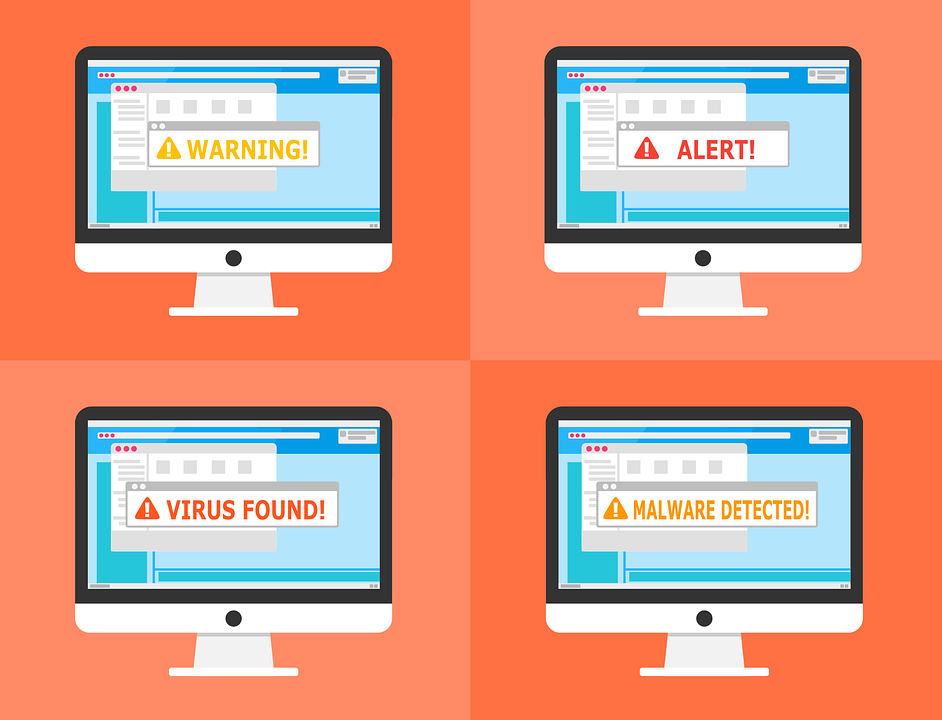5 Types of Network Security Threats
Introduction
In this article, you will be able to know and learn about some significant network security threats and some common malicious attacks. Malicious attacks are generally done to commit the theft of financial details and sensitive corporate or personal information. Malicious attacks or cyber attacks focus on disabling, disrupting, destroying, or controlling computer systems or altering, blocking, deleting, manipulating, or stealing the data held within these systems. So, there is a need to study network security, and some common network security threats in detail in order to prevent it.
Network security
· Network security refers to protecting data and resources from any unauthorized access.
· Network security is a type of cyber security.
· Network security aims to protect the usability, integrity, and safety of a network, associated components, and data shared over the network.
· Network security is a set of technologies that protect the company’s working infrastructure by preventing the entry of potential threats.
· Network security includes antivirus and antispyware programs, a firewall that blocks unauthorized access to a network, and VPNs (Virtual Private networks) used for secure remote access.
Network security threats
Network security threat refers to any attempt to breach your network and obtain access to your data.
Some common and general categories of network security threats are:
· Phishing
· Malware
· Ransomware
· Rogue security software
· Denial-of-service attack
· Computer viruses
Phishing
· Phishing attacks refer to the practice of sending fraudulent communications that appear to come from a reputable source.
· Phishing is usually done to steal sensitive data like credit card and login information or to install malware on the victim’s machine.
· Phishing is usually done through email.
· Some common phishing attacks are email phishing, spear phishing, whaling smishing, and angler phishing.
Malware
· Malware is also called malicious software.
· Malware refers to any software intentionally designed to cause disruption to a computer, server, client computer, or computer network, leak private information, gain unauthorized access to information or systems, deprive user’s access to information or unknowingly interfere with the user’s computer security and privacy.
· Malware is made available in the form of a file or code, typically delivered over a network, that infects, explores, steals, or conducts virtually any behavior an attacker wants.
· Malware includes viruses, spyware, ransomware, adware, worm, Trojans, bots or botnets, rootkits, malvertising, and keyloggers.
· Malware is a code designed to harm your computer and the data present in it.
Ransomware
· Ransomware refers to a type of malware that prevents or limits users from accessing their system, either by locking the system’s screen or locking the user’s file or threatening to publish the victim’s personal data until a ransom is paid.
· Some advanced malware uses a technique called cryptoviral extortion.
Spyware
· Spyware refers to malware that is designed to enter a user’s computer, gather data from the device and user, and send it to third parties without their consent.
· Spyware are programs designed to track all your computer activities from which applications you use to which websites you visit.
· Some common spyware are adware, system monitors, tracking including web tracking, Trojans, digital rights management, keyloggers, rootkits, and web beacons.
Adware
· Adware refers to a program that pop-up various advertisements and offers, often based on the websites you visit.
· Some common examples of adware are fireball, Appearch, Dollar Revenue, Gator, and DeskAd.
Bot
Bot refers to the individual machine under the control of the bot-holder.
Botnet
· Botnet refers to a network of computers infected by malware that is under the control of a single attacking party, known as the bot-herder.
· Botnets can be used to perform distributed Denial-of-service attacks, steal data, send spam, and allow the attacker to access the device and its connection.
· Botnet attacks involve sending spam, data theft, exploiting sensitive information, or launching vicious DDOS attacks.
Keylogger
· A keylogger is an insidious form of spyware.
· Keylogger refers to activity-monitoring software programs that give hackers access to your personal data.
Rootkit
· Rootkit refers to a clandestine computer program designed to provide continued privileged access to a computer while actively hiding its presence.
· Rootkit is malware that is extremely difficult to spot and very difficult to remove.
· One of the most famous and dangerous rootkits was Stuxnet.
Trojans
· Trojans or Trojan horses refer to any malware that misleads users of its true intent.
· Trojan horse malware is camouflaged in the form of regular software such as utilities, games, and even antivirus programs.
Malvertising
· Malvertising refers to the cyber security threat in which perpetrators inject malicious code into legitimate online advertising networks.
· Malvertising is the use of online advertising to spread malware.
· Malvertising typically involves injecting malware-laden advertisements into legitimate online advertising networks and web pages.
· Malvertising typically redirects users to malicious websites.
Fileless malware
· Fileless malware refers to a type of malware that exists exclusively as a computer memory-based artifact that is in RAM.
· Fileless malware doesn’t rely on files and leaves no footprint, making it challenging to detect and remove.
· Fileless malware uses native, legitimate tools built into a system to execute a cyber attack.
· Some common examples of fileless malware attacks are SamSam ransomware and operation Cobalt Kitty.
Web beacons
· Web beacon refers to a technique used on web pages and emails to unobtrusively allow checking that a user has accessed some content.
· Web beacon is used for email tracking.
Computer worm
· Computer worm refers to a standalone malware computer program that replicates itself in order to spread to other computers.
· Some common malicious computer worms are email, file sharing, crypto, internet, and instant messaging.
Rogue security software
· Rogue security software is also known as rogueware, or rogue software.
· Rogue security software refers to a form of malware and internet fraud that misleads users into believing that there is a virus on their computer and aims to convince them to pay for a fake malware removal tool that actually installs malware on their computer.
· Some common roguewares are PC secure system, Antivirus Master, and SpyMarshal.
A denial-of-service attack (DOS)
· A denial-of-service attack (DOS) attack refers to an attack that shut down a machine or network, making it inaccessible to its intended users.
· Denial-of- service attack is done by flooding the target with traffic or sending it information that triggers a crash.
· Some common DOS attacks are the AWS DDOS attack in 2020, the GitHub attack in 2018, the Mirai Dyn DDOS attack in 2016, and the Cloud Flare DDOS attack in 2014.
Computer viruses
· Virus refers to malware that when executed, replicates itself and inserts its own code.
· Computer viruses affect the functioning and programming of the device.
· Some common and widespread computer viruses are Morris worm, Numda, ILOVEYOU, SQL Slammer, Stuxnet, crypto locker, Conficker, Tinba, multipartite virus, direct action, browser hijacker, overwrite virus, web scripting virus, file infector, network virus, and boot sector virus.
Some common and useful programs and devices used to detect, manage, control, and remove network security threats are:
Antivirus
· Antivirus software refers to a type of program or software designed and developed to protect computers from malware like viruses, computer worms, spyware, botnets, rootkits, and keyloggers.
· Antivirus can scan, detect, block, and remove malware from your computer.
· Some useful antivirus protections are malware signature antivirus, system monitoring antivirus, and machine learning antivirus.
Antispyware
· Antispyware refers to a program or software designed to prevent and detect unwanted spyware program installations and to remove those programs if installed.
· Eric Seagren is an antispyware commonly used to secure your network for free.
Firewall
· Firewall refers to a network security system that monitors and controls the incoming and outgoing network traffic based on predetermined security rules.
· Firewalls guard traffic at a computer’s entry point, called ports, where information is exchanged with external devices.
· A firewall is used to establish a barrier between a trusted network and an untrusted network, such as the internet.
· Software firewalls, hardware firewalls or both are used to block malicious traffic such as viruses, malware, and hackers.
To know more visit https://zueducator.blogspot.com











No comments:
Post a Comment